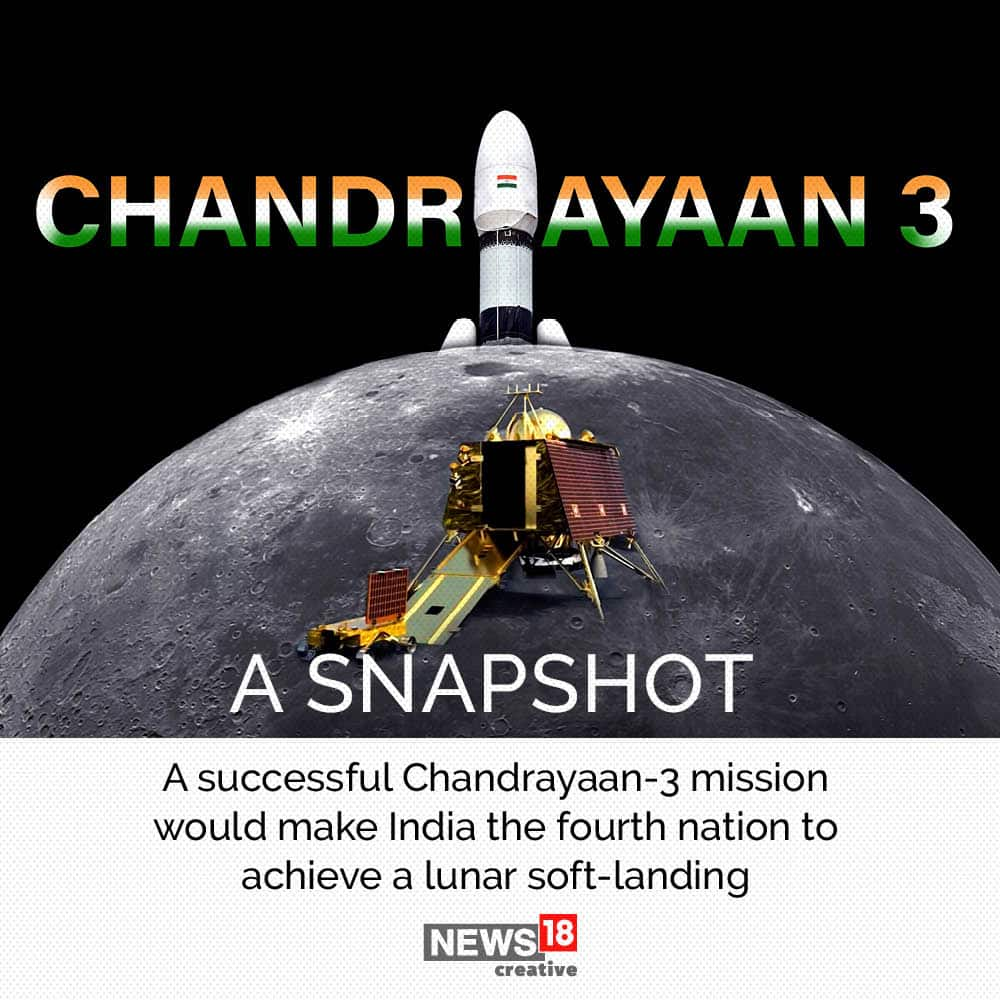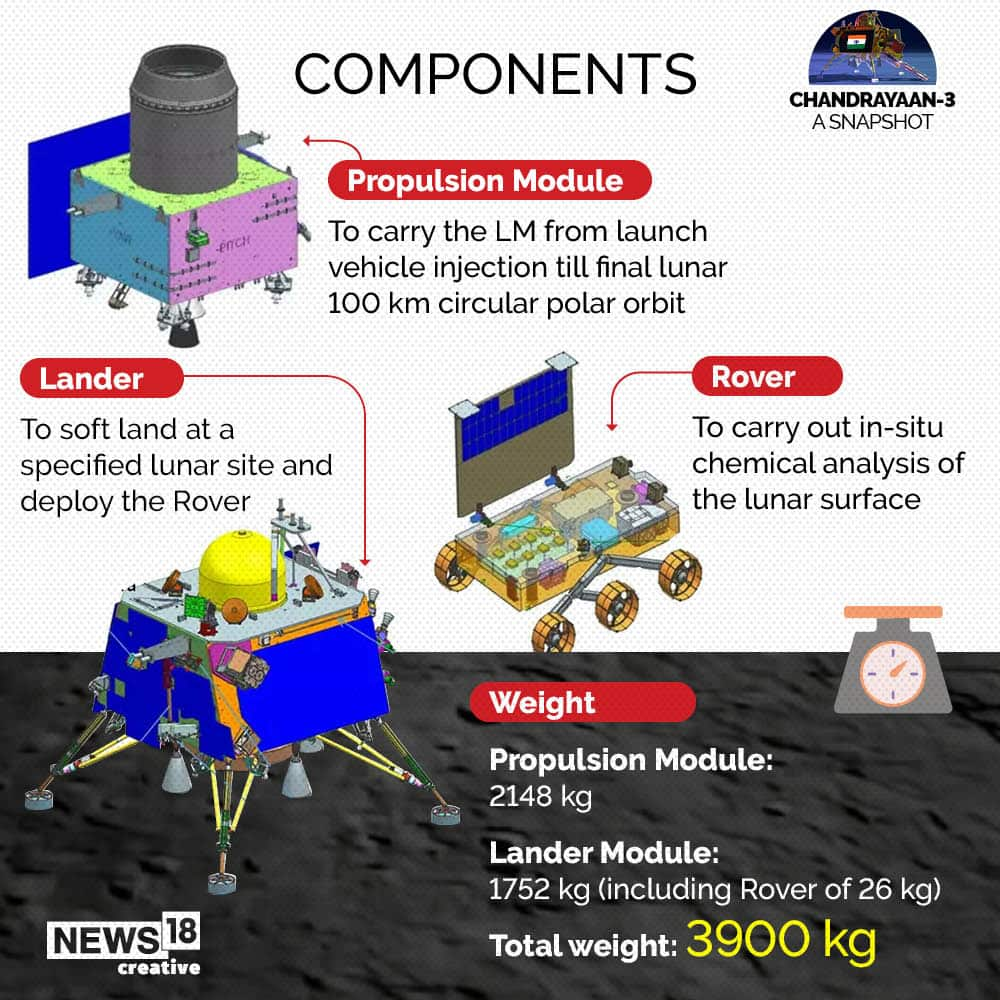In Pics | A breakdown of Chandrayaan-3's key components
Chandrayaan-3 is expected to land in the southern region of the Moon approximately 6:04 pm IST on August 23, 2023. If the landing is successful, India will make history by becoming the first country to achieve a gentle spacecraft landing on the lunar South Pole
1/5

Chandrayaan-3 is expected to land in the southern region of the Moon approximately 6:04 pm IST on August 23, 2023. If the landing is successful, India will make history by becoming the first country to achieve a gentle spacecraft landing on the lunar South Pole. This achievement will position India as the fourth nation, following the United States, the Soviet Union and China to have achieved the same.
2/5

The primary objective of Chandrayaan-3 is to place a lander and rover in the higher terrains near the southern pole of the Moon. The mission's core purpose is to demonstrate the entire sequence of landing and rover mobility.
3/5

The components of Chandrayaan-3 involve a Lander and a Rover, which will be launched using the LVM3 vehicle from the SDSC SHAR facility in Sriharikota. A propulsion module will transport the lander and rover setup to a lunar orbit of 100 km. The propulsion module is equipped with the Spectro-polarimetry of Habitable Planet Earth (SHAPE) payload, which is intended for studying Earth's spectral and polarisation characteristics from its lunar orbit.
4/5

The Pragyan lunar rover is equipped with scientific instruments, including an Alpha Particle X-Ray Spectrometer (APXS) and a Laser Induced Breakdown Spectroscope (LIBS), that will enable it to analyze the landing site on the Moon. This technology will provide valuable insights into the chemical and mineral makeup of the lunar surface in the vicinity of the landing site.
5/5

The lander is equipped with the Radio Anatomy of Moon Bound Hypersensitive ionosphere and Atmosphere (RAMBHA) payload. Among its experiments is Chandra's Surface Thermophysical Experiment (ChaSTE), designed to measure temperature and thermal conductivity.
Discover the latest Business News, Budget 2025 News, Sensex, and Nifty updates. Obtain Personal Finance insights, tax queries, and expert opinions on Moneycontrol or download the Moneycontrol App to stay updated!






